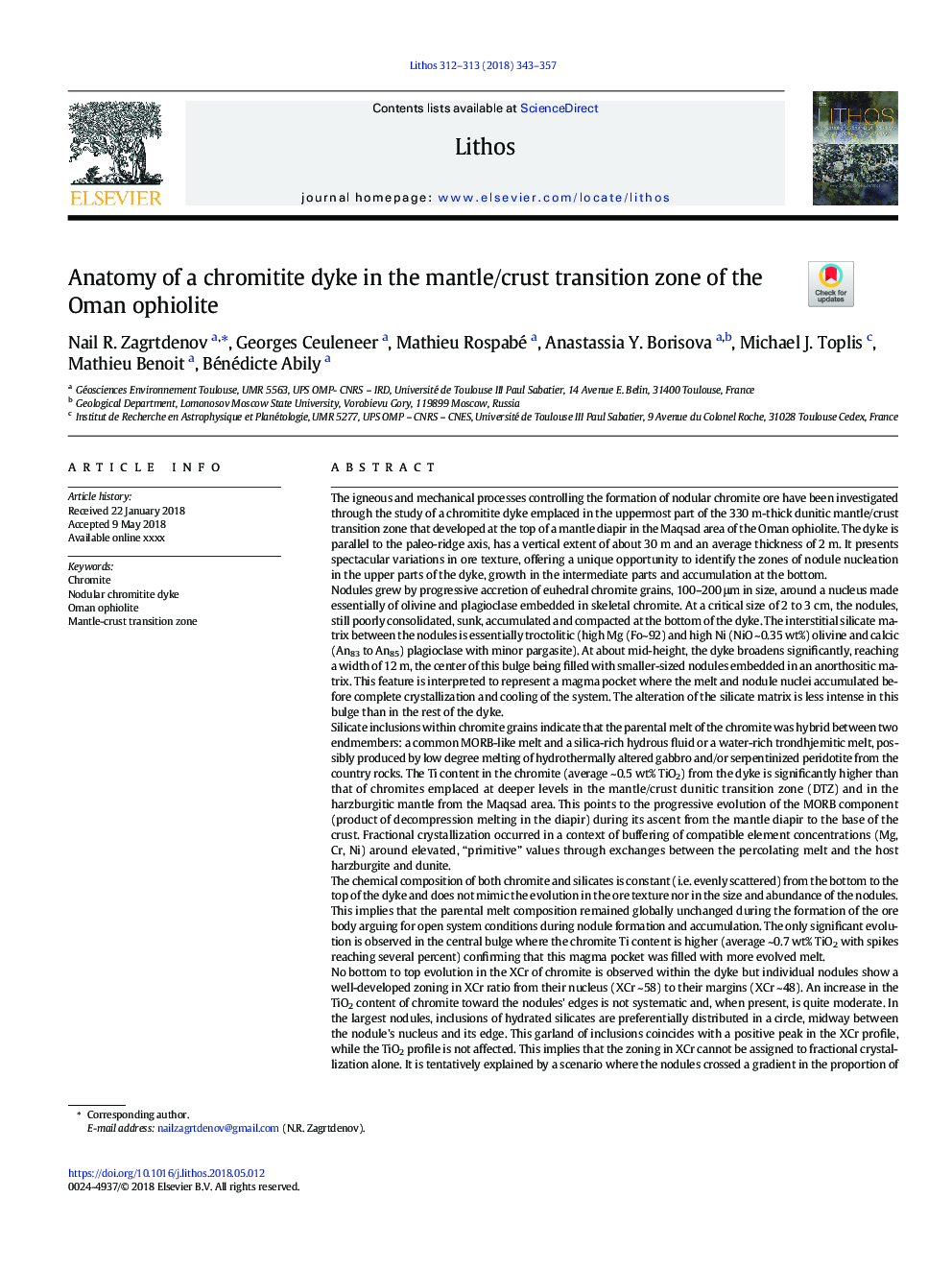| Article ID | Journal | Published Year | Pages | File Type |
|---|---|---|---|---|
| 8911597 | Lithos | 2018 | 15 Pages |
Abstract
No bottom to top evolution in the XCr of chromite is observed within the dyke but individual nodules show a well-developed zoning in XCr ratio from their nucleus (XCr ~58) to their margins (XCr ~48). An increase in the TiO2 content of chromite toward the nodules' edges is not systematic and, when present, is quite moderate. In the largest nodules, inclusions of hydrated silicates are preferentially distributed in a circle, midway between the nodule's nucleus and its edge. This garland of inclusions coincides with a positive peak in the XCr profile, while the TiO2 profile is not affected. This implies that the zoning in XCr cannot be assigned to fractional crystallization alone. It is tentatively explained by a scenario where the nodules crossed a gradient in the proportion of the MORB vs. more reducing hydrous melt during their growth. The gradient could have been maintained by a density contrast between a buoyant hydrous silica-rich melt and denser MORB.
Keywords
Related Topics
Physical Sciences and Engineering
Earth and Planetary Sciences
Geochemistry and Petrology
Authors
Nail R. Zagrtdenov, Georges Ceuleneer, Mathieu Rospabé, Anastassia Y. Borisova, Michael J. Toplis, Mathieu Benoit, Bénédicte Abily,
